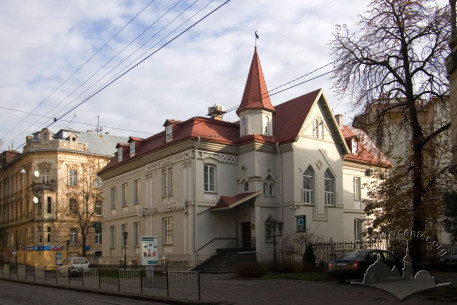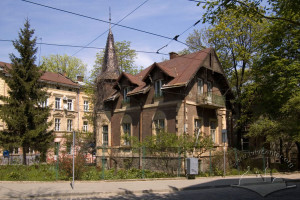Vul. Henerala Chuprynky, 11 – bank building (former villa) ID: 535
This single family villa (1889-1890, with later reconstructions, co-designed by Julian Zachariewicz and Ivan Levynsky) is an example of Historicist single family home. Small corner tower and dynamic interior outline used to show similarity with the shapes of neighboring objects in Kastelivka (for example, with a villa on Generala Chuprynky 21). During the following decades architecture of building no. 11 lost its original character. Reconstructions turned the villa into a multi-apartment building. Today (2009) offices of a bank establishment are located here.
Related buildings and spaces
People
Ivan Levynskyi
– One of the most renowned architects of Habsburg Lviv,
entrepreneur, one of the largest employers of his time in the city. His firm was
involved in the construction and renovation of countless structures throughout
Lviv and the region. Professor at the Higher Technical School, an active public
figure associated with the Ukrainian People's Movement.
Sources
- Державний архів Львівської області (ДАЛО) 2/2/2528.
- Архітектура Львова: Час і стилі ХІІІ–ХХІ ст., ред. Юрій Бірюльов, (Львів: Центр Європи, 2008), 356.
- Ігор Мельник, Львівські вулиці і кам’яниці, мури, закамарки, передмістя та інші особливості королівського столичного міста Галичини (Львів: Центр Європи, 2008), 104.







